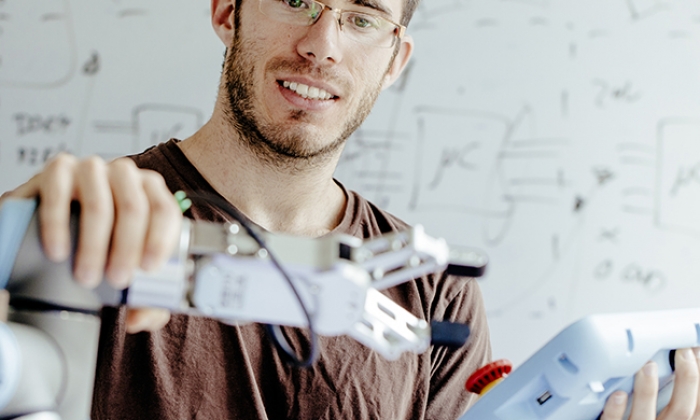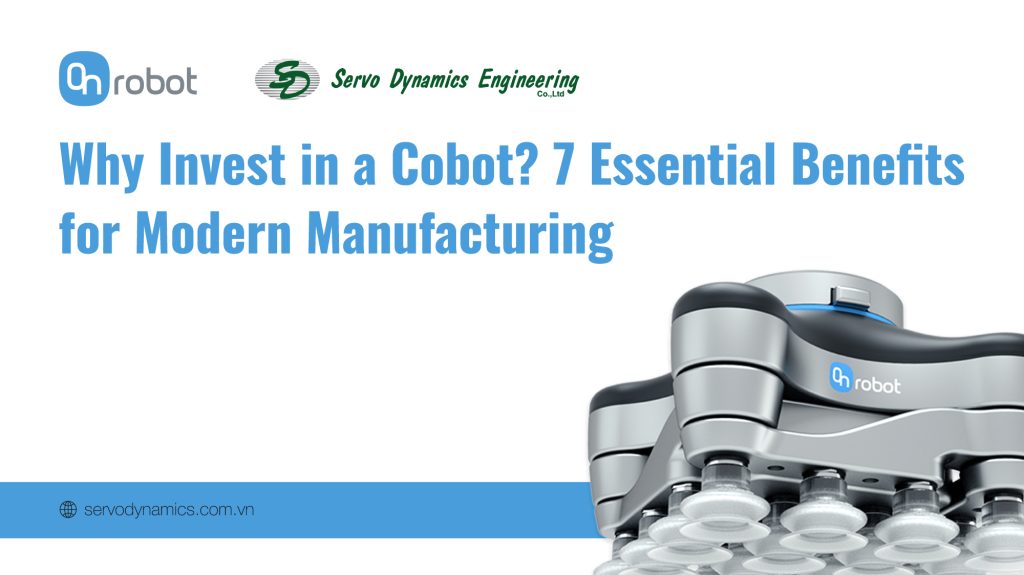Completed Project, Industrial Automation
Why Invest in a Cobot? 7 Essential Benefits for Modern Manufacturing
A cobot, a contraction of “collaborative robot,” is a type of industrial robot specifically engineered to work safely alongside human employees. This design philosophy stands in stark contrast to traditional, stationary industrial robots, which are typically caged off and operate in isolation from human contact.

What is a Cobot (Collaborative Robot)?
Cobots are defined by their advanced safety features, which include sensitive sensors and integrated force and power limiting technologies. These features enable true collaboration between human and machine, which is critical in the modern production environment.
By implementing cobots, businesses can achieve a shorter production cycle, increase overall throughput, dramatically reduce the product defect rate, and support their existing workforce. Instead of replacing employees, cobots make them more efficient and valuable by handling tasks that are dull, dirty, or dangerous.
In today’s competitive manufacturing industry, maximizing productivity is the ultimate key to profitability. If you’re looking to scale your business, a cobot is one of the fastest ways to achieve this. Here are the 7 essential reasons why you should consider investing in a cobot yourself:
1. Simple Programming: Cobots Learn by Example
Many newer cobot models are specifically designed to be highly user-friendly, eliminating the need for a specialized robotics engineer to handle implementation. Many even feature “hand-guiding” capabilities, where an operator can physically guide the robot arm through a sequence of movements. The cobot literally learns the task by example, making setup intuitive and fast for any employee.
2. Fast Deployment: Set Up Your Cobot in Under 30 Minutes
The longer the setup time for automation, the higher the initial investment cost. High costs associated with staff training, external service providers, and production downtime can severely delay your Return on Investment (ROI), posing a major headache for small and medium-sized enterprises (SMEs).
Collaborative robots are built for speed and come with out-of-the-box functionality. Thanks to pre-programming software, the latest models can be physically installed and ready to work in less than 30 minutes. This speed and flexibility in redeployment directly increase productivity and accelerate your ROI.
3. Versatility and Flexibility Across Diverse Cobot Applications
The core selling point of a cobot is its inherent flexibility. Reprogramming a cobot for a new task is so simple that an external service worker is rarely necessary. This versatility means a single cobot can easily execute a variety of tasks in a single day or be dedicated to different production sequences on other days.
This agile design allows your staff to quickly respond to design changes and redeploy the cobot instantly. Cobots excel in roles ranging from industrial applications—such as pick and place, packaging, assembly, machine tending, and quality inspection—to service roles like transporting goods or providing information in public spaces.
4. Achieve Higher Consistency and Precision in Production
Unlike human workers, robots do not tire. This makes them significantly more consistent and accurate than their human counterparts, especially when performing highly monotonous tasks. Cobots can repeat the same precise action, with the same force and quality, for as long as required, ensuring your output quality never diminishes.
5. How Cobots Improve the Employee Experience and Workplace Safety
A common worry among manufacturing workers is being replaced by faster, more precise machines. However, particularly in companies with high-mix, low-volume production, this scenario is unlikely. The implementation of cobots marks a key aspect of the “Fourth Industrial Revolution,” placing the human workforce and collaborative robots side-by-side.
Workers are not replaced; instead, the cobot takes over repetitive, monotonous, or physically difficult processes. This frees up human employees to focus their time and creativity on more complex, value-adding processes, improving their day-to-day experience. By assuming dangerous, dirty, and dull tasks, cobots create a safer and more enjoyable workspace.
6. Cobots Dramatically Increase Productivity and Optimize Processes
A cobot is perfectly suited to take over processes where a human worker would struggle to maintain focus or consistent performance over long shifts. This includes highly monotonous tasks or tasks requiring an ergonomically incorrect posture.
Their extreme precision and consistency virtually eliminate the possibility of human error and product defects. Since task changes are fast, workers can quickly optimize the entire production line, cutting costs while maintaining the highest standards of product quality.
7. Fast Return on Investment (ROI) and Low Cost
A significant financial advantage of cobots is that they cost substantially less than traditional, high-volume industrial robots. Depending on the application and how often they are utilized, the investment in a cobot can potentially be earned back in as few as 200 to 300 days, offering one of the fastest paybacks in automation technology.
Servo Dynamics Engineering: Partnering for Automation Success in Vietnam
The seven reasons outlined here demonstrate that investing in a cobot is not just about automation—it’s about optimizing processes, empowering your existing team, and achieving rapid ROI. For businesses in Vietnam ready to take the next step into the future of flexible manufacturing, you can rely on trusted, local expertise. Servo Dynamics Engineering is the Authorized Distributor of OnRobot in Vietnam, offering high-quality grippers, sensors, and tooling solutions, along with the local support needed to successfully implement collaborative technologies in your facility.

 Tiếng Việt
Tiếng Việt



